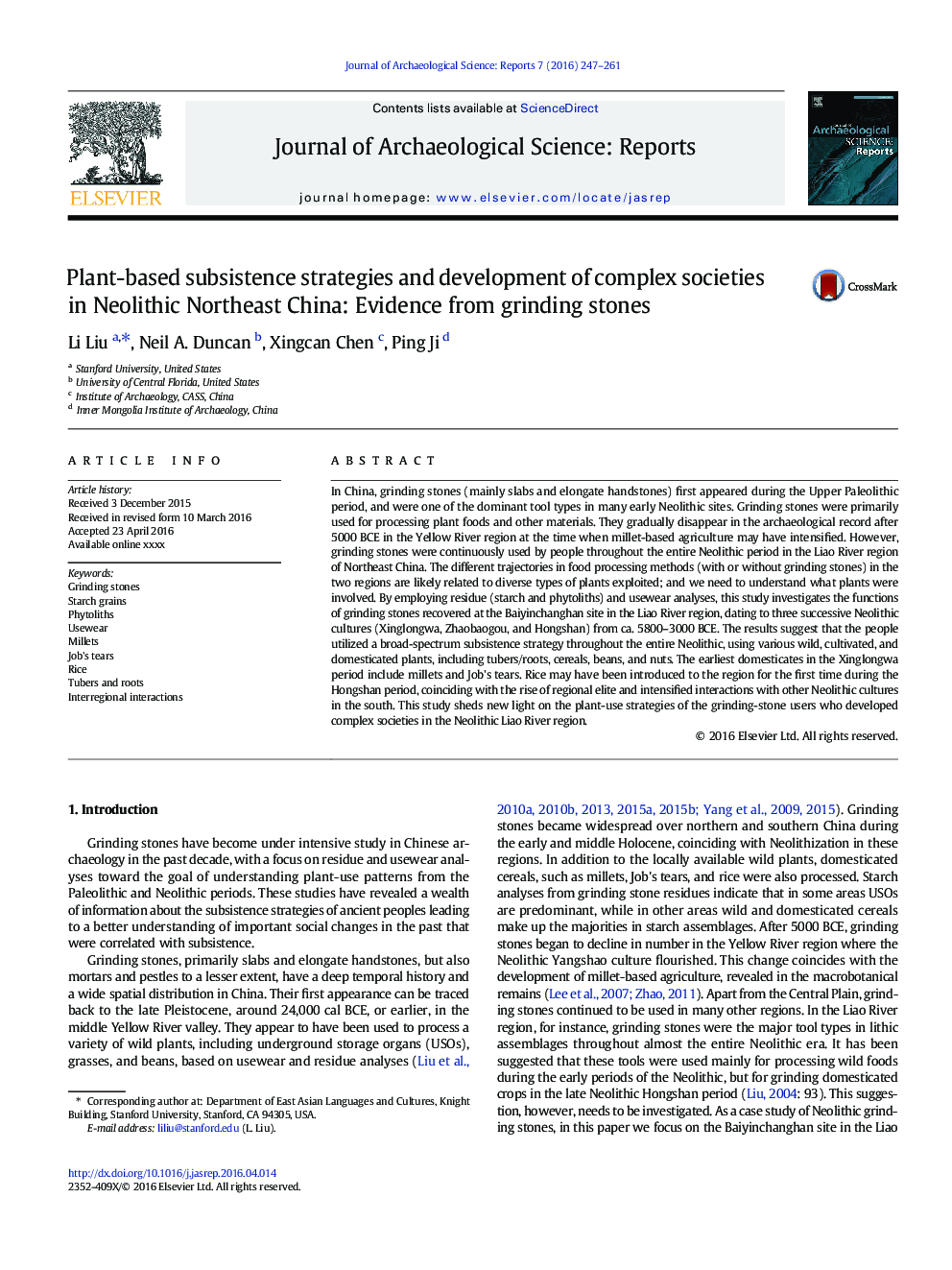| کد مقاله | کد نشریه | سال انتشار | مقاله انگلیسی | نسخه تمام متن |
|---|---|---|---|---|
| 7446511 | 1483936 | 2016 | 15 صفحه PDF | دانلود رایگان |
عنوان انگلیسی مقاله ISI
Plant-based subsistence strategies and development of complex societies in Neolithic Northeast China: Evidence from grinding stones
ترجمه فارسی عنوان
استراتژی های محروم گیاهان و توسعه جوامع پیچیده در نوسنگی شمال شرقی چین: شواهدی از سنگ های سنگ زنی
دانلود مقاله + سفارش ترجمه
دانلود مقاله ISI انگلیسی
رایگان برای ایرانیان
کلمات کلیدی
سنگهای سنگزنی، دانه نشاسته، فیتولیت، لباس استفاده ارزن، اشک یو برنج، غده و ریشه، تعاملات بین منطقهای،
موضوعات مرتبط
علوم انسانی و اجتماعی
علوم انسانی و هنر
تاریخ
چکیده انگلیسی
In China, grinding stones (mainly slabs and elongate handstones) first appeared during the Upper Paleolithic period, and were one of the dominant tool types in many early Neolithic sites. Grinding stones were primarily used for processing plant foods and other materials. They gradually disappear in the archaeological record after 5000Â BCE in the Yellow River region at the time when millet-based agriculture may have intensified. However, grinding stones were continuously used by people throughout the entire Neolithic period in the Liao River region of Northeast China. The different trajectories in food processing methods (with or without grinding stones) in the two regions are likely related to diverse types of plants exploited; and we need to understand what plants were involved. By employing residue (starch and phytoliths) and usewear analyses, this study investigates the functions of grinding stones recovered at the Baiyinchanghan site in the Liao River region, dating to three successive Neolithic cultures (Xinglongwa, Zhaobaogou, and Hongshan) from ca. 5800-3000Â BCE. The results suggest that the people utilized a broad-spectrum subsistence strategy throughout the entire Neolithic, using various wild, cultivated, and domesticated plants, including tubers/roots, cereals, beans, and nuts. The earliest domesticates in the Xinglongwa period include millets and Job's tears. Rice may have been introduced to the region for the first time during the Hongshan period, coinciding with the rise of regional elite and intensified interactions with other Neolithic cultures in the south. This study sheds new light on the plant-use strategies of the grinding-stone users who developed complex societies in the Neolithic Liao River region.
ناشر
Database: Elsevier - ScienceDirect (ساینس دایرکت)
Journal: Journal of Archaeological Science: Reports - Volume 7, June 2016, Pages 247-261
Journal: Journal of Archaeological Science: Reports - Volume 7, June 2016, Pages 247-261
نویسندگان
Li Liu, Neil A. Duncan, Xingcan Chen, Ping Ji,
